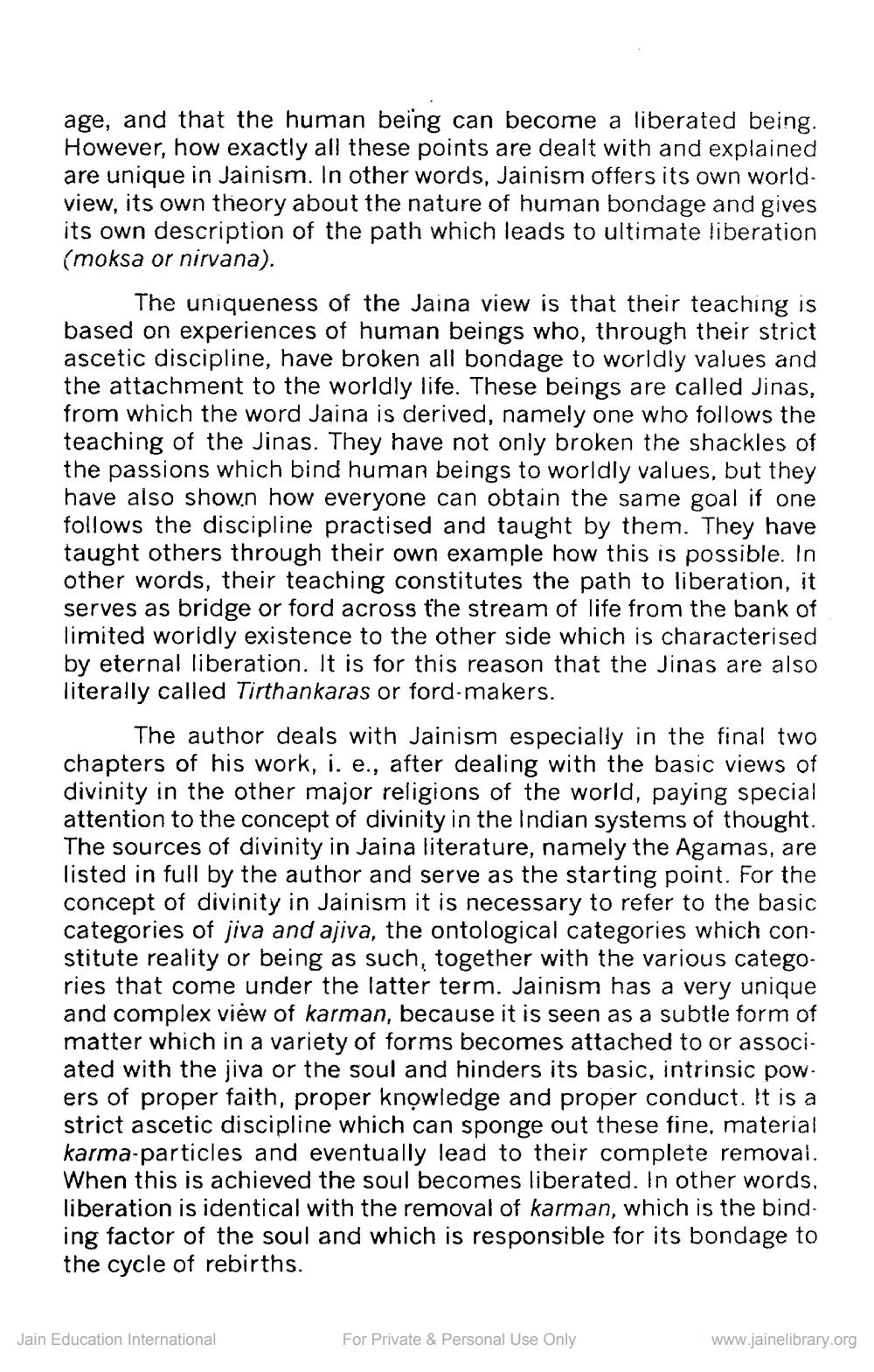________________
age, and that the human being can become a liberated being. However, how exactly all these points are dealt with and explained are unique in Jainism. In other words, Jainism offers its own world. view, its own theory about the nature of human bondage and gives its own description of the path which leads to ultimate liberation (moksa or nirvana).
The uniqueness of the Jaina view is that their teaching is based on experiences of human beings who, through their strict ascetic discipline, have broken all bondage to worldly values and the attachment to the worldly life. These beings are called Jinas, from which the word Jaina is derived, namely one who follows the teaching of the Jinas. They have not only broken the shackles of the passions which bind human beings to worldly values, but they have also show.n how everyone can obtain the same goal if one follows the discipline practised and taught by them. They have taught others through their own example how this is possible. In other words, their teaching constitutes the path to liberation, it serves as bridge or ford across the stream of life from the bank of limited worldly existence to the other side which is characterised by eternal liberation. It is for this reason that the Jinas are also literally called Tirthankaras or ford-makers.
The author deals with Jainism especially in the final two chapters of his work, i. e., after dealing with the basic views of divinity in the other major religions of the world, paying special attention to the concept of divinity in the Indian systems of thought. The sources of divinity in Jaina literature, namely the Agamas, are listed in full by the author and serve as the starting point. For the concept of divinity in Jainism it is necessary to refer to the basic categories of jiva and ajiva, the ontological categories which constitute reality or being as such, together with the various categories that come under the latter term. Jainism has a very unique and complex view of karman, because it is seen as a subtle form of matter which in a variety of forms becomes attached to or associated with the jiva or the soul and hinders its basic, intrinsic pow ers of proper faith, proper knowledge and proper conduct. It is a strict ascetic discipline which can sponge out these tine, material karma-particles and eventually lead to their complete removai. When this is achieved the soul becomes liberated. In other words, liberation is identical with the removal of karman, which is the binding factor of the soul and which is responsible for its bondage to the cycle of rebirths.
Jain Education International
For Private & Personal Use Only
www.jainelibrary.org




